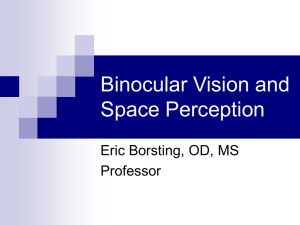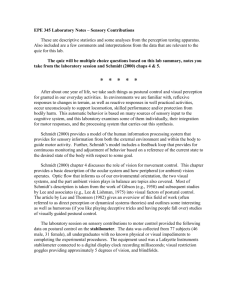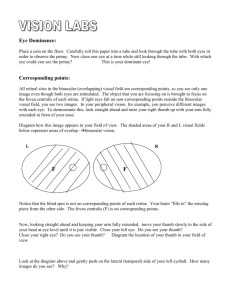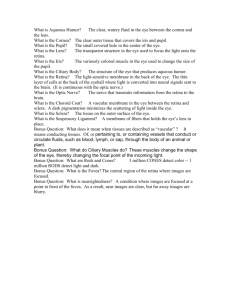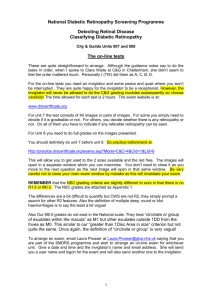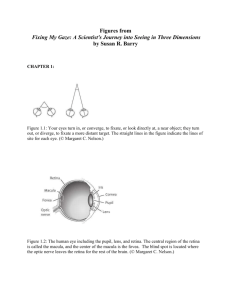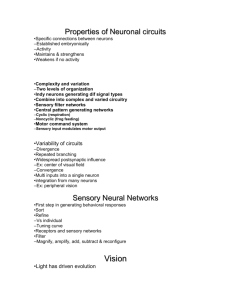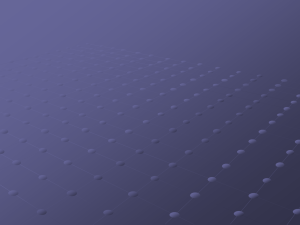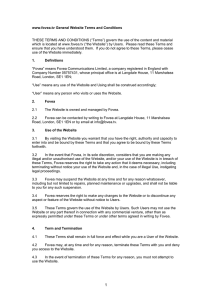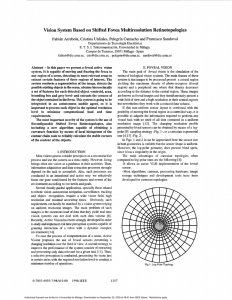Dear Notetaker:
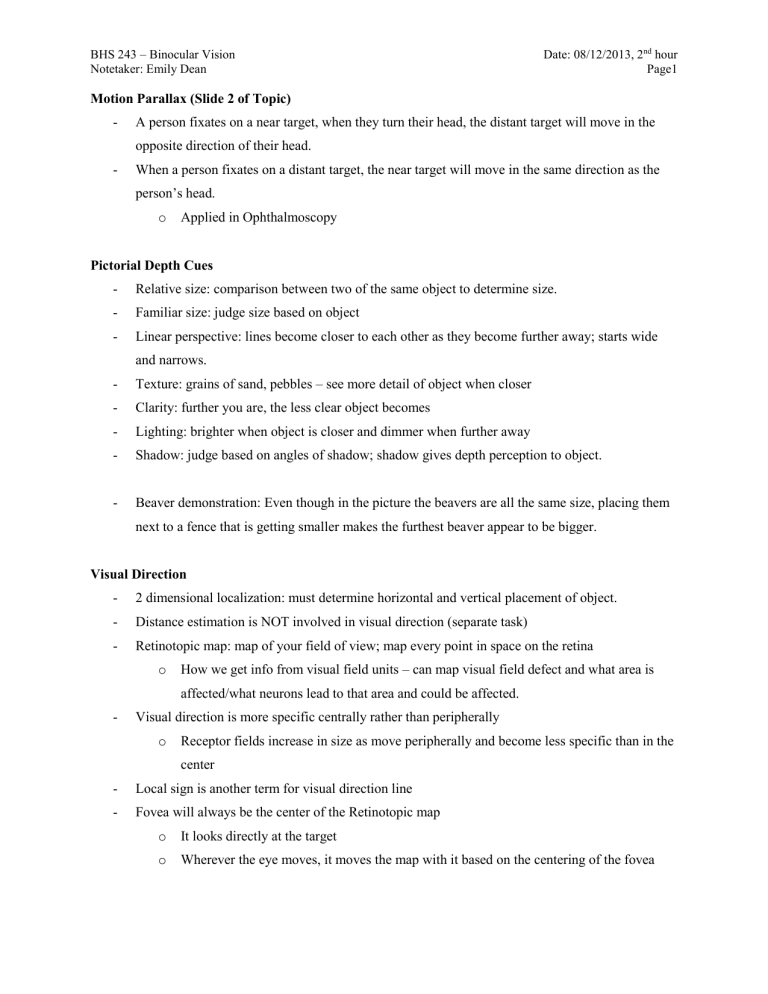
BHS 243 – Binocular Vision
Notetaker: Emily Dean
Date: 08/12/2013, 2 nd hour
Page1
Motion Parallax (Slide 2 of Topic)
A person fixates on a near target, when they turn their head, the distant target will move in the opposite direction of their head.
When a person fixates on a distant target, the near target will move in the same direction as the person’s head. o Applied in Ophthalmoscopy
Pictorial Depth Cues
Relative size: comparison between two of the same object to determine size.
Familiar size: judge size based on object
Linear perspective: lines become closer to each other as they become further away; starts wide and narrows.
Texture: grains of sand, pebbles – see more detail of object when closer
Clarity: further you are, the less clear object becomes
Lighting: brighter when object is closer and dimmer when further away
Shadow: judge based on angles of shadow; shadow gives depth perception to object.
Beaver demonstration: Even though in the picture the beavers are all the same size, placing them next to a fence that is getting smaller makes the furthest beaver appear to be bigger.
Visual Direction
2 dimensional localization: must determine horizontal and vertical placement of object.
Distance estimation is NOT involved in visual direction (separate task)
Retinotopic map: map of your field of view; map every point in space on the retina o How we get info from visual field units – can map visual field defect and what area is affected/what neurons lead to that area and could be affected.
Visual direction is more specific centrally rather than peripherally o Receptor fields increase in size as move peripherally and become less specific than in the center
Local sign is another term for visual direction line
Fovea will always be the center of the Retinotopic map o It looks directly at the target o Wherever the eye moves, it moves the map with it based on the centering of the fovea
BHS 243 – Binocular Vision
Notetaker: Emily Dean
Date: 08/12/2013, 2 nd hour
Page2
Visual Space
Perception of space represented by the world as interpreted visually
Can judge where people and places are and objects around you
Oculocentric Visual Direction
Monocular o Eye-centered visual direction o Direction is relative to eye landmarks
Relative to fovea o Primary line of sight is always fixation point to fovea through nodal point.
Also considered visual axis, principal visual direction
Where phosphenes are generated can indicate where a problem may be o Retinal detachment causes phosphenes, for example o Can be generated by pressing on eye when closed
If press on temporal side of eye, phosphenes are generated on nasal side.
Oculocentric visual direction: what personal feels is location of object in visual field using only one eye o May not be related to the perception of themselves in space
Their head could be turned and the object will appear straight in front of them because it is centered on the fovea
Therefore, anything centered on the fovea is perceived as straight ahead, even if it is not actually straight ahead.
Egocentric Visual Direction
-
“Body Centered” or “Head Centered”
Relation to person and not just eye by itself
Could be monocular or binocular o If binocular:
Cyclopean direction – creates perception you are looking out of one eye
Person says it feels like sight is from between their eyes and a little back
May not be in center due to dominance of one eye over the other; will have a shift towards that eye
Movement increases with amount of dominance
BHS 243 – Binocular Vision
Notetaker: Emily Dean
Date: 08/12/2013, 2 nd hour
Page3
Corresponding Retinal Points
Stimulate two points giving a corresponding visual direction o Can have bi-nasal or bi-temporal points; won’t need until later in the course
Not always symmetrical o Could have point a certain distance from fovea, but the distance could be bigger in one eye
Ex. in notes, the distance between AC is bigger in the left eye o This asymmetry is adjusted for by the system
Point of fixation projects to cells in the retina, those cells project to the LGN o The cells line up with cells similar to them in the LGN o The signal is then sent to the visual cortex
BOTH: Stereopsis and Visual direction pertain to corresponding retinal points, NOT visual acuity
Clinical Use of Visual Direction
Amsler Grid o Metamorphopsia
a wrinkle or damage to the retina will distort the map and be seen using Amsler grid because the grid will be distorted as well
can then locate area of damage
Visuoscopy o Detection and specification of eccentric fixation
INVOLUNTARY o Usually for pediatrics mostly o Can’t place on target because they are not using their fovea, place next to the target
Shift their map to a non-foveal point
Eccentric viewing o Low vision o Voluntary awareness of using a non-foveal spot to see
Person purposely looks off center in order to see better
BHS 243 – Binocular Vision
Notetaker: Emily Dean
Date: 08/12/2013, 2 nd hour
Page4
Clicker Questions
1.
If you look at the anterior lens with a direct ophthalmoscope, the posterior lens appears to move in what direction? a.
AGAINST the direction you turn your head b.
WITH the direction you turn your head
2.
If you view the anterior lens, a scar on the surface of the cornea appears to move in what direction? a.
AGAINST the direction you turn your head b.
WITH the direction you turn your head
3.
If an object appears to be smaller than its twin, it would be: a.
Further away b.
Closer
4.
If you activate the temporal retina of the right eye, a phosphene is projected to which side? a.
The Right b.
The Left
5.
If the right eye is up and out, the fovea perceives the image to be in what direction? a.
Down and In b.
Straight ahead c.
Up and Out
6.
Corresponding retinal points are important for which of the following (pick more than 1)? a.
Visual Direction b.
Stereopsis c.
Visual Acuity
